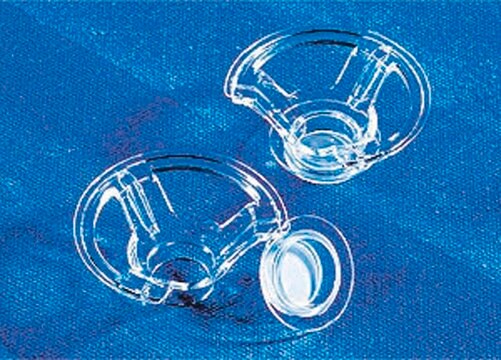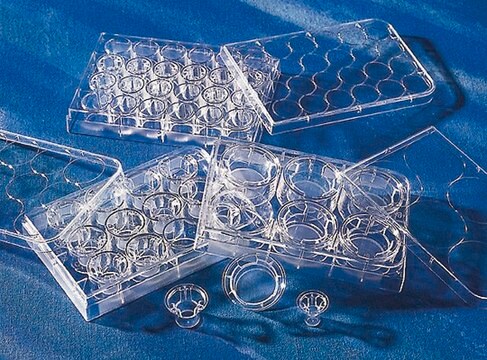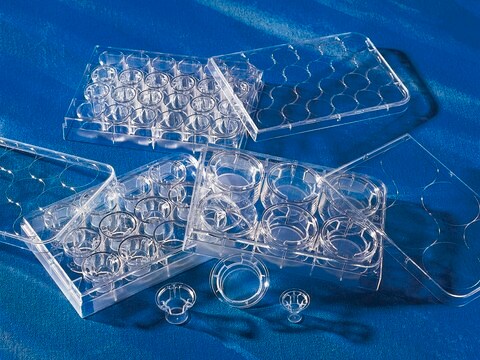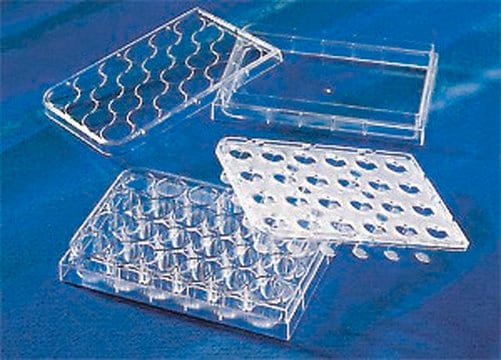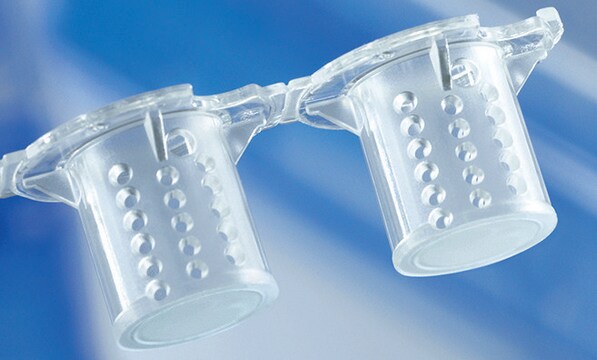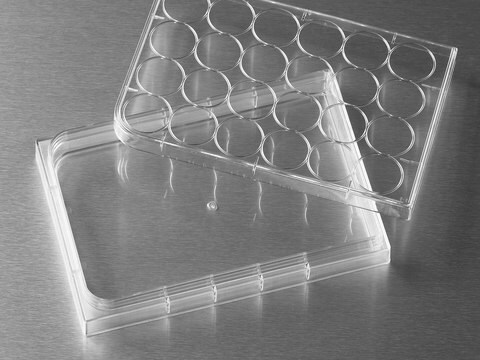CLS3407
Corning® Costar® Snapwell cell culture inserts
12 mm Snapwell Insert with 0.4 μm pore, pore densitiy 1 x 108 pores/cm2, polycarbonate membrane, TC-treated, sterile, 24/cs
Synonym(s):
cell culture inserts
About This Item
Recommended Products
material
clear polystyrene plate
flat bottom wells clear
polycarbonate membrane
sterility
sterile
feature
lid
plate format: 6 well
packaging
case of 24
pack of 6
manufacturer/tradename
Corning 3407
membrane diam.
12 mm
membrane thickness
10 μm
surface area
1.12 cm2 , cell growth area
pore size
0.4 μm
binding type
Tissue Culture (TC)-treated surface
Looking for similar products? Visit Product Comparison Guide
Related Categories
General description
- A modified Transwell permeable support containing a 12 mm diameter 0.4 μm pore polycarbonate membrane supported by a detachable ring
- Once cells are grown to confluence on the Snapwell insert, the ring can be placed in a vertical or horizontal diffusion chamber
- Sterilized by gamma radiation
- Packaged in 6 well plates
Legal Information
Certificates of Analysis (COA)
Search for Certificates of Analysis (COA) by entering the products Lot/Batch Number. Lot and Batch Numbers can be found on a product’s label following the words ‘Lot’ or ‘Batch’.
Already Own This Product?
Find documentation for the products that you have recently purchased in the Document Library.
Customers Also Viewed
Our team of scientists has experience in all areas of research including Life Science, Material Science, Chemical Synthesis, Chromatography, Analytical and many others.
Contact Technical Service